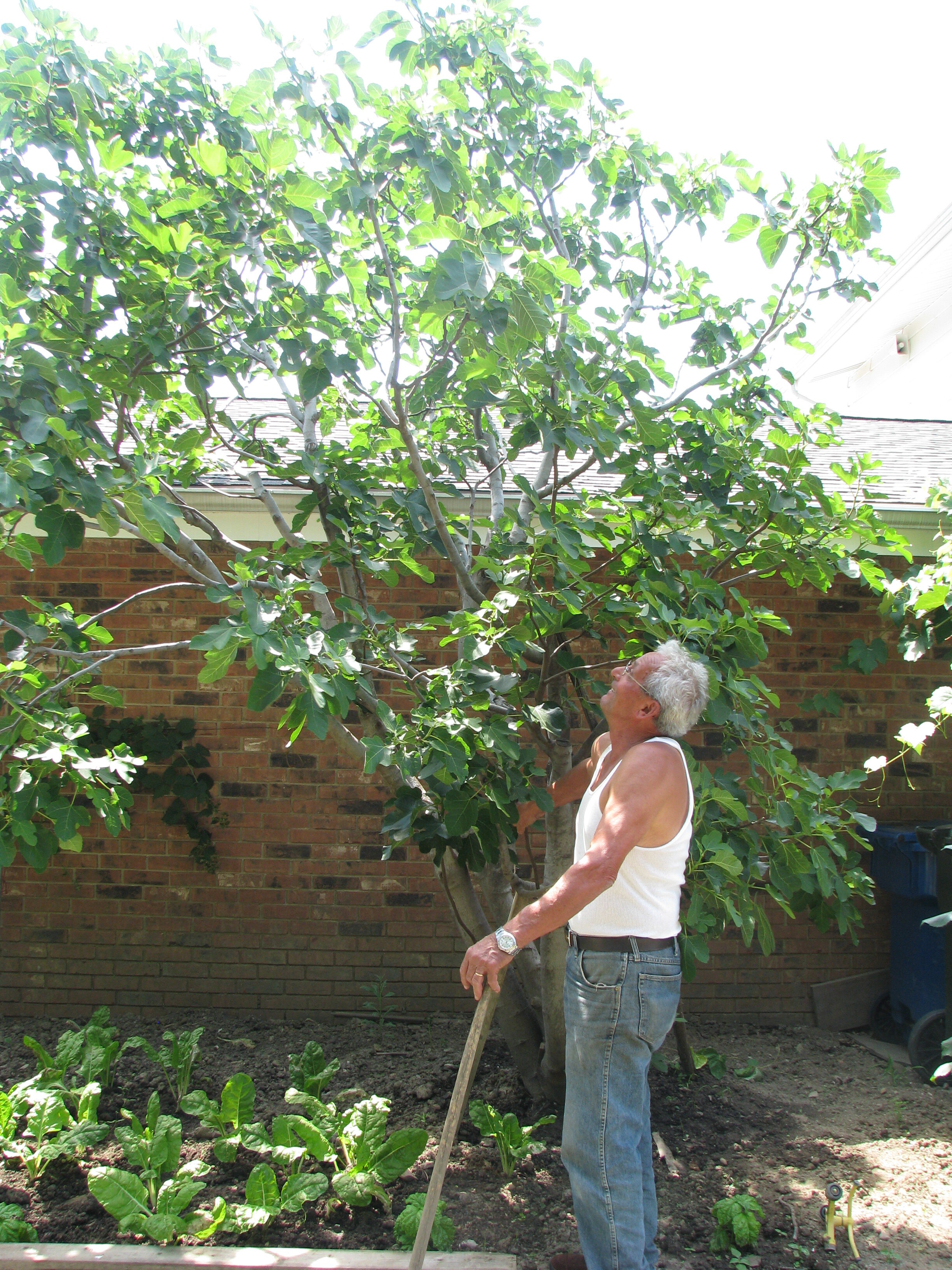Fascination of Figs
The allure of fig growing goes beyond the sweet reward of the sun-ripened fruit. For many, figs evoke a powerful connection to the past, and the challenges of growing them are outweighed by the joy they bring. The fig has always been a revered fruit to Italian Americans. It adapts and thrives in a land not its own, much like the immigrants themselves. Growing them when they arrived in the US was a way to have a small piece of the Old World in the New. Many of their American born children and grandchildren now proudly associate the fig with their immigrant heritage.
Figs seem to fascinate people, even those without family memories associated with them. Maybe it has something to do with the fig being such an old fruit, one of the first known to humankind. Whatever it is, I know that when I bring a small potted fig tree to a talk I give or an event hosted by the Project, inevitably people see it and say, “Oh, I have a fig tree” or “I used to have a fig tree” or “I wish I had a fig tree.” But my favorite response is when they spot the tree and a smile comes over their face and say, “Oh! Fig trees remind me of my grandfather or grandmother or my mom or my dad” and they tell a story related to that memory. It brings up positive feelings of someone very special to them.
Figs can be grown in the ground or in containers. Which you choose depends on the time and energy you’d like to devote to your figs, and the labor involved depends upon the part of the country where you live. In southern regions where there is no danger of freezing, fig trees can be planted directly in the ground without protection. All northern grown trees require protection from the cold during winter months and there is a variety of ingenious ways to do that.
For a tree that is planted in the ground, a common method of overwintering is wrapping the trees with layers of material such as straw and blankets and a final protective layer of plastic to keep moisture out. It’s important that the plastic not touch the tree branches themselves though. On the right is one of Tommaso and Tommasina Floro’s trees wrapped for the winter.
Another method is burying the tree. Yes, that’s right, actually digging a hole, uprooting part of the tree and laying it down. The hole is then covered with plywood with dirt on top, or filled with dirt and mounding it so that it ends up looking like someone was buried in your backyard.
My grandfather usually built little sheds, similar to the ones in the photo, to protect his trees through the winter. I have to admit that as a teenager I wasn’t too proud of the little outhouse-looking structures that dotted our backyard.
Figs can also be planted in large pots and moved into a sheltered, but cool area, like an unheated garage during the winter months.
My friend Michele Vaccaro stopped by earlier this week (March 25) to tell me it’s time to begin to let my tree breathe. He helps me bury it every year, always leaving a small opening to allow air to circulate in the hole. During the coldest part of winter, the opening is covered with dirt and leaves. It is uncovered again as the air warms so that the tree can acclimate to the cool spring temperatures before unearthing the whole tree and standing it upright.
Timing the full unearthing is always tricky. Wait too long and the tree will begin to leaf out underground and become soggy and moldy from the warmth and wet of spring. Waiting too long also shortens the season for fruit to ripen. Unearth too early, and a late frost may damage this season’s crop. Nicola Colicchio of Cleveland is seen here inspecting the damage to his tree from an unexpected late spring frost. This was a rare and disappointing experience for this lifelong fig grower.
When I was visiting gardens in Brooklyn last summer, I was surprised to see the number of fig trees growing in backyards there. I was told that most of them haven’t been protected through the winter. Having been planted decades ago, maybe the well-established roots and recent mild winters have made this possible.
In the video below, Michele talks about growing, pruning and starting trees. He also talks about how his family gathered and dried figs to make crocetta. We’ll have lots more information through the season about figs and in the fall, Michele will give more detailed instructions for preparing the trees for winter.





